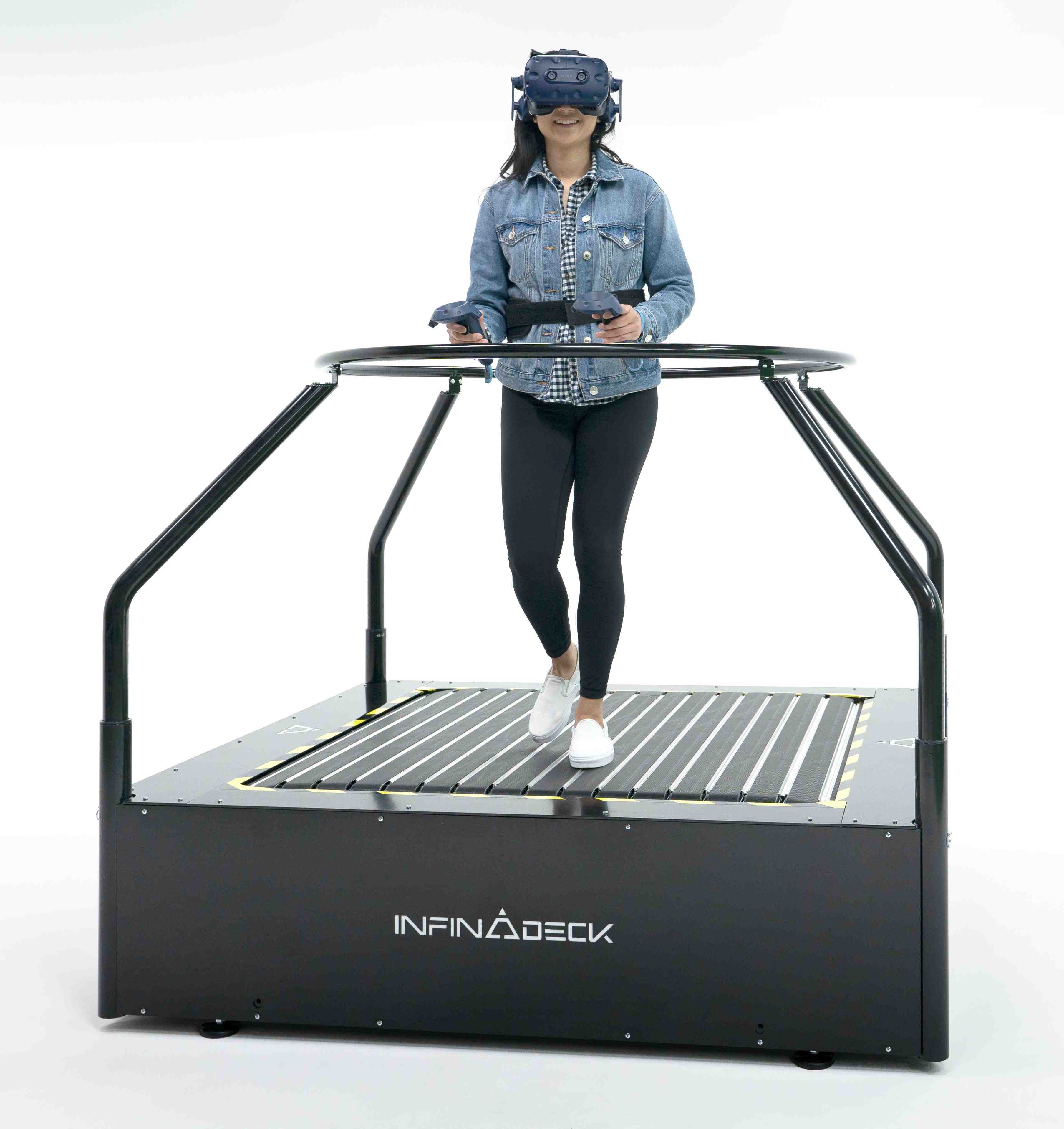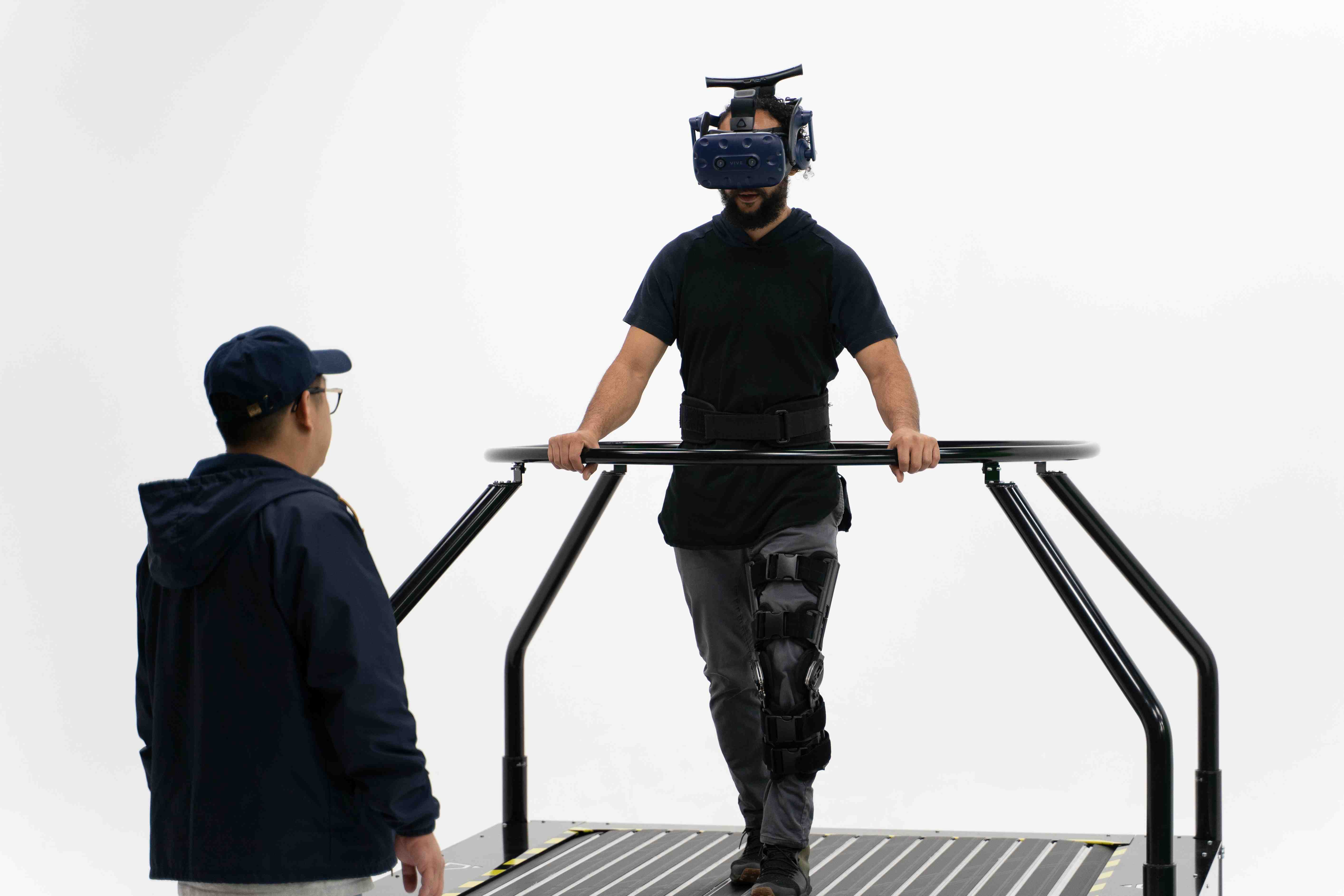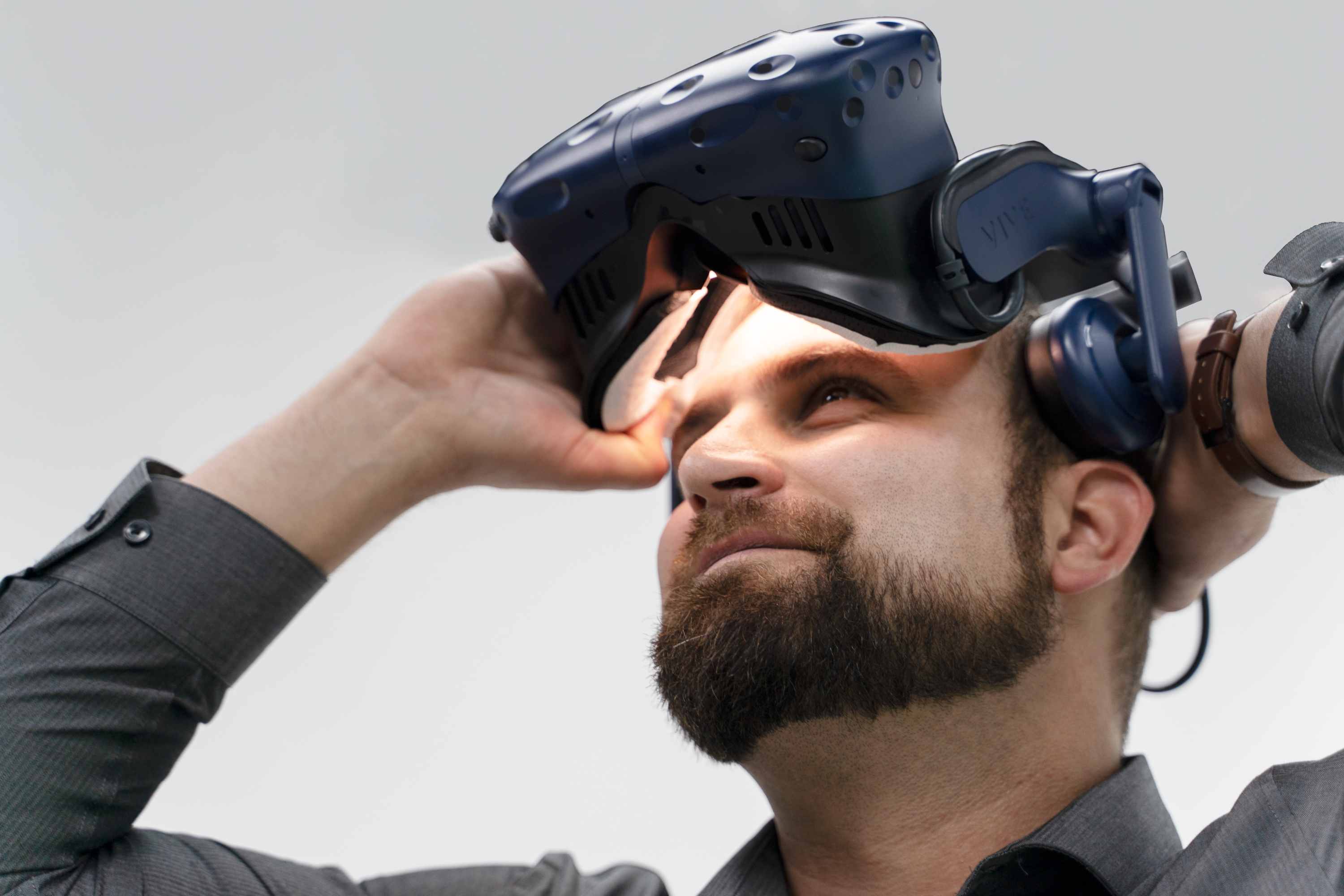Movement Without Limits
Step into a world where your entire body becomes the controller. Infinadeck is the patented omnidirectional treadmill that transforms how you move through virtual worlds.
Unlike traditional VR setups that keep you planted in one spot, our platform lets you walk, run, and explore naturally in any direction while staying safely in place.




